Abdominal muscle strain
What is an abdominal muscle strain?
- An abdominal strain, or pulled stomach muscle, is usually an overuse injury. It occurs when muscles within the stomach stretch or tear. An abdominal strain and pulled stomach muscle are the same conditions. Football and tennis players are susceptible to this injury. But anyone can strain the abdominal muscles. Muscle strains recover over time with rest. Core-strengthening exercise can help prevent strained muscles.
- It usually occurs when you use the muscle over and over so much that you damage it. for instance, you’ll stretch or tear an abdominal muscle by making repetitive movements while playing sports or doing other physical activities, like sit-ups or crunches. This type of injury heals gradually with rest, and you’ll take steps to lower your chances of getting it again.
- The muscles of the abdomen are layered from deep to superficial including the internal and external obliques (fibers run in opposite diagonal directions) rectus abdominis (fibers run up and down) and transverse abdominal (fibers meet the abdomen). Each features a function linked to its structure. pulled abdominal tear The deepest muscle, transverse abdominal constricts to carry the abdominal contents in place and to help with force expiration, laughing, coughing, and sneezing. the interior and external obliques’ diagonal fibers are designed to assist in trunk rotation, lateral flexion (movement sideways), and when working as a pair, trunk flexion.
- The most superficial surface muscle group is the rectus abdominis. this is often the set of muscles that fun up and down the abdomen and can be seen in athletes who have low body fat (also known as the much sought after “six-pack”). The muscle fibers are often seen just under the skin as they rise and fall from their attached fascial sheath. The rectus abdominis is primarily liable for trunk flexion but also can assist in other trunk movements.
Where are your abdominal muscles located?
There are five main muscles in your abdomen. Two are vertical (up and down) muscles located toward the center of your body. Three are flat muscles stacked on top of every other, situated toward the edges of the trunk.
The two vertical muscles are:
- Pyramidalis: This vertical muscle is little and shaped like a triangle. It’s located very low, in your pelvis. It helps maintain internal pressure in your abdomen.
- Rectus abdominis: This pair of muscles goes down the center of your abdomen from your ribs to the front of your pelvis. The muscles hold your internal organs in situ and keep your body stable during movement. The rectus abdominis may form bumps sometimes called a “six-pack” when someone features a trim, fit abdomen.
The three flat muscles are:
- External obliques: The external obliques are a pair of muscles, one on all sides of the rectus abdominis. they’re the largest of the flat muscles and at the bottom of the stack. They run from the edges of your body toward the middle. The external obliques allow the trunk to twist side to side.
- Internal obliques: the interior obliques are a pair of muscles on top of the external obliques, just inside your hip bones. just like the external obliques, they’re on the sides of the rectus abdominis, running from the edges of your trunk toward the middle. They work with the external oblique muscles to permit the trunk to twist and turn.
- Transversus abdominis: The transversus abdominis muscle is at the bottom of the stack. This pair of muscles is the deepest of the flat muscles. They stabilize the trunk and support it to maintain internal abdominal pressure.
Where do abdominal strains occur?
An abdominal strain can affect any abdominal muscle. The person may have,
- Left side abdominal strain.
- Right side abdominal strain.
- Lower abdominal strain.
- Upper abdominal strain
What are the classifications of abdominal strain?
- First Degree – A mild stretching of a muscle is diagnosed as a first-degree abdominal strain and can result in localized pain, pain during movement, mild swelling, coughing, laughing, deep breathing, or sneezing.
- Second Degree – A more severe injury of an abdominal is a partial tear or (second degree). counting on the number of fibers torn, this sort of injury may be quite debilitating for the athlete. The athlete may experience sudden abdominal pain, localized swelling, marked tenderness, and discoloration. Any movements of the athlete may be painful with the athlete taking care in movements.
- Third Degree – A third-degree muscle strain is the most severe injury as a complete muscle rupture. same with the symptoms of a second-degree muscle strain, the athlete can also experience the symptoms of shock including nausea, pale skin, vomiting, excess perspiration, difficulty breathing, and a shallow and rapid pulse. Athletes suspected of a full rupture muscle tear should be immediately far away from the activity and provided emergency medical care until emergency services arrive. The athlete must have to keep still while an ice pack is applied to the injury. The athlete’s vital signs (pulse, blood pressure, respiration) should be monitored until help arrives.
Causes of an abdominal strain
- A pulled abdomen is often an overuse injury. Repetitive motion, generally in sports or other physical activity, cause the muscle to stretch or tear.
- Strains can involve tiny, minor tears within the muscle fibers to severe pulls that can even detach the muscle.
- This injury is more common in sports that require twisting, like tennis, football, baseball & golf.
Other causes include:
- Chronic coughing or sneezing.
- Intense or excessive exercise.
- Accidents, like falls or motor vehicle wrecks.
- Lifting heavy objects.
- Sudden twisting.
- Overstretching of the muscles.
- Overuse of the abs.
- Quick, violent twisting of the trunk.
- Trunk pain while exercising, coughing, laughing, or sneezing.
- Swelling or bruising.
- Trouble inhaling severe cases.
- Gas pains.
- Indigestion
- Diastase recti may be a stretching of a linea Alba with the abnormal widening of the gap between the 2 medial sides of the rectus abdominal muscle, which is usually seen during pregnancy, or in post-menopausal women.
Sing and Symptoms of abdominal muscles strain
- you’ll experience this pain when,
- Coughing, sneezing or laughing.
- Sprinting or doing vigorous exercise.
- Getting up after a protracted period of sitting or inactivity.
Other symptoms include,
- Abdominal pain
- Bruising.
- Stiff muscles.
- Swelling.
- Muscle spasms or cramping
- Sudden sharp pain
- The surface of the stomach area may feel tender & inflamed. You’re more likely to feel these quiet sensations when you’re contracting the abdominal muscles & moving.
- Weakness
- Difficulty in breathing
- Trunk pain while exercising, coughing, laughing, or sneezing
- Difficulty in doing activities and moving
How are the symptoms different than a hernia?
Although the symptoms of abdominal strain and hernia could seem similar, there are several differences between the two.
- If you’re experiencing a hernia, you’ll notice:
- An unexpected lump or bulge within the abdomen
- Persistent aching or burning sensation
- Nausea
- Vomiting
- Constipation
How is the abdominal muscle strain diagnosed?
The explanation for abdominal muscle strain is diagnosed based on the symptom history, a physical examination, & testing if needed.
The doctor is probably going to ask you questions about the characteristics of the pain, & whether you’ve got any underlying physical or mental health conditions that could be contributing to the abdominal pain.
Questions may address by the subsequent aspects of the abdominal muscle strain:
- Where it’s located
- How intense it’s
- Whether it’s dull, stabbing, burning, or cramping
- How long you’ve had it
- Whether any activities or actions seem to form it worse or better
- The doctor can also ask about the overall health history, any recent injuries, & whether you would possibly be pregnant.
- If the doctor suspects a significant health condition that may need treatment, any of the subsequent tests may be
Used to help diagnose the cause of the abdominal muscle strain:
- Blood, urine, or stool tests
- X-ray of the abdomen
- Ultrasound of the abdomen
- computed tomography scan (CT scan)of the abdomen
- Enema (colon X-ray)
- Endoscopic procedures (inserting a tube with a small camera through your mouth or rectum to view areas inside the digestive tract)
- Electrocardiogram
Assessment
Subjective assessment
- History with present sing and symptoms
- Mechanism of injury
- Inciting trauma-direction and extent of injury force
Observation
- Strain injuries of the abdominal may present with an obvious deformity similar to a bulge or defect in the muscle belly.
Palpation
- Tenderness
- Swelling
Treatment of abdominal muscle strain
Medical Treatment
Abdominal muscle strains infrequently require surgery and still may be necessary for a complete rupture.
For immediate
- Nonsurgical, Conservative treatment maximum muscle strains don’t demand surgery if the muscle is fully damaged doctors suggest surgery If there’s a partial gash also the athlete can replace when they are effortless and have normal strength and movement. this generally occurs following anywhere from many weeks to several months of significant treatment and therapy. When the muscle is fully damaged, the athlete may advantage from surgical repair. e tone- the effort of a muscle strain.
- Some therapists suggest avoiding inimical pain medicines which will extend your threat of bleeding — similar to over-the-counter (OTC) medicine (naproxen sodium (Aleve) aspirin and ibuprofen (Advil, Motrin IB), — through the first 48 hours after a muscle strain. Acetaminophen (Tylenol) et al. can be supportive for pain relief during this period.
- A physiotherapist can help you to improve the strength and stability of the injured joint or limb. Your doctor may suggest that you simply stabilize with a brace. for a few muscle injuries, abdominal sprint surgery may be called.
the R.I.C.E approach
- To prevent swelling and pain as first aid by following RICE principal
- R- rest
- I- ice for cooling
- C- compression tapping and splinting
- E- elevation
- Beginning with the appliance of an ice pack for 20 minutes. The ice pack is often reapplied every 2 hours for the first 2 to 3 days post-injury.
- Rest is another component of the R.I.C.E. principle but it’s a little more difficult with an abdominal strain. Injuries to the arms or legs can easily be protected & rested through the utilization of crutches, slings, or braces. However, splinting the trunk of the body isn’t such an easy task.
- To protect & rest the abdominal muscles, the athlete may have to limit activities for a few days until the pain reduce.
Physiotherapy treatment for abdominal muscle strain
The aim of activity treatment is
- Reduce abdominal muscle pain
- Reduce muscle swelling
- Increases thigh muscle strengths.
- Improve full mobility of the ligament and corresponding joint
- Restore patient’s confidence
- Restore the patient’s whole functional activity
Acute stage -one to two weeks after injury
Physiotherapy rehabilitation can be started after 48 hours of injury, For the first few days give an electric modality give to relieve swelling and pain
Electrotherapy
- Ultrasound
- Ultrasound has been used for tissue healing
- Increases blood circulation and mobility.
- To reduce swelling and pain
- Cryotherapy
- Inflammation and swelling can be reduced by applying cryotherapy in form of ice packs, and cold water baths to the affected area. Continuous application of cold packs several times a day for 15-30 minutes at a time is recommended.
- TENS
- Trans-cutaneous electrical nerve stimulation (TENS) may be able to help reduce pain and muscle spasms.
First few days
- Ice pack
- Electrotherapy
- Active exercise

Strengthening exercise
1) Abdominal bracing
- While lying on your back, tighten your stomach muscles as you draw your navel down towards the floor.
- Hold 10 -15 second
- Repeat 10 times
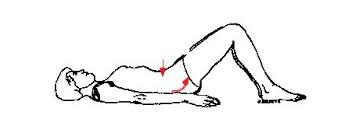
2) Pelvic tilt
- lie on the back with bent knees.
- Engage and tighten the abdominal muscles as you pull in, drawing the belly button toward the spine.
- Press the lower back to the floor as you slightly tilt the hips and pelvis back.
- Hold for 10 seconds. Relax and return to the starting position.
- Do 10 -15 repetitions.
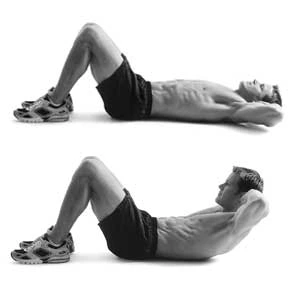
3) Abdominal Crunches
- This is often a great exercise to do this will not place too much stress on the lower back and spine.
- For this exercise, you’ve got to Lie on the back and flex the knees to a comfortable position, lock the hands behind the top or cross the arms in front of the chest now curl the head, shoulders, & upper back down the ground.
- The lower back should be in touch with the ground; you should only rise 2 to 3 inches and exhale as you rise.
- Hold 5 to 10 seconds. Slowly return to the initial position.
- Repeat 10 times.

4) Low Ab Leg Raises:
- For this exercise, you have to Lie on the back and flex the knees to a comfortable position.
- Then extend the legs. Contract the abdominal muscles to lift the feet off the ground in an arc-like motion.
- Lift the feet about ten inches up. Slowly (in the same arc-like motion) back the legs/feet to the ground.
- Repeat 10-15 times for 2 to 3 sets.
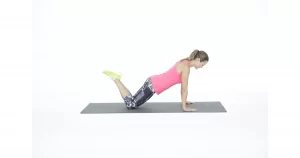
5) Plank from knees
- Lay on your stomach and face down and up yourself on your elbows directly below the shoulders.
- Bind your core muscles then lift your hips just off the mat remaining your body in a straight line as shown.
- Pulling your elbows down near to your hips as you hold the position to interact with the lat muscles.
- 10 to 15 seconds hold then relax, do 10 repetition
- Hold as long as able with the goal of holding for 1 minute
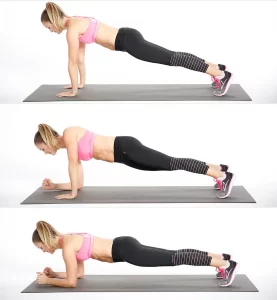
6) Plank
- Start on your toes and hands or elbows and remain the body straight like a board.
- Your feet should be hip-width apart and the hands or elbows shoulder width.
- Hold this position for 10-15 seconds.
- Make sure the hips do not drop too low or rise too up.
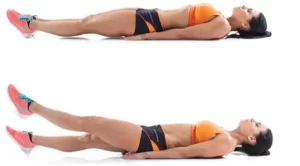
7) Flutter-Kicks:
- Lie on your back and place the arms side to the body (straight).
- Lift both legs and keep them straight while moving them upwards and down the opposite way.
- If there is a gap between the floor and the back, raise the upper body to round out the back. You can then lean on the elbow and place them next to the body to hold the weight.
- 20 repeat, 10 rep each side.
Chronic phase-Three to eight weeks
Strengthening and stretching exercise

1) Sit-ups
- Do sit-ups the proper way to keep them safe. instead of placing the hands behind the head, cross them ahead of you or slide them along the thighs to the knee. bend the knees at a forty-five-degree angle.
- For this exercise, you’ve got to Lie on the back with flexed knees and the feet anchored. Tuck the chin towards the chest to elongate the back of the neck.
- Interlace the fingers at the bottom of the skull, cross the arms with the hands on opposite shoulders, or place the palms down alongside your body.
- Breathe out as you lift the upper limb close to the thighs. Breath in as you slowly lower by self backtrack to the ground.
- Do 10 to 15 repetition

2) Lateral modified plank
- While lying on your side with your knees bent, lift your body off the floor on your elbow and knees.
- Try and maintain a straight spine.
- Hold 10-15 times,
- Do 6 to 8 repetitions, Repeat on the other side
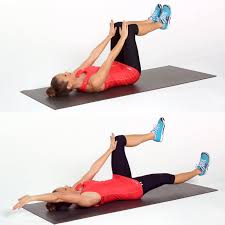
3) Dead bug
- While lying on your back with your knees and hips bend to 90 degrees, use your stomach muscles and carry on your pelvic neutral position.
- Do not allow your spine to move. Hold the pelvic neutral position and then slowly straighten out a leg without connecting to the floor.
- At the same time raise an opposite arm over your head. Do not allow your spine to arch during this movement.
- Return to starting position and then repeat on the opposite side.
- Hold 2 to 4 seconds, do 2 sets, 10 repetition

4) Cobra Pose abdominal stretch
- Lay down your face on the bottom or an exercise mat. this is often the beginning position.
- Place both hands toward the shoulder, elbows are bent. With the hips flat on the ground, push the torso upward, while gazing straight ahead. This will stretch the abdominal muscles.
- Hold this cobra pose for 15 secs, then back to the starting position.
- Repeat 2- 4 times.
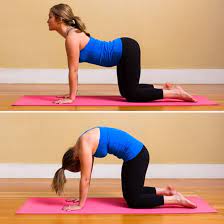
5) Cat-Cow Stretch:
- Get all four limbs in position, and draw the head down as you arch the back, the same as a cat does.
- Stretch the neck all the way upwards and sink the belly all the way downwards, stretching the abdominal muscles.
- Hold this abs stretch for 15 secs, then return to the starting position.
- Repeat 2- 4 times.
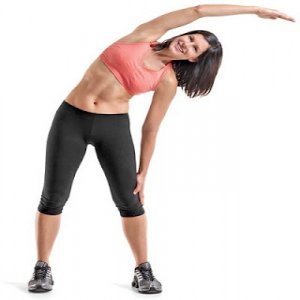
6) Ab Side Stretch:
- Stand tall with the feet shoulder-width apart with the arms on another side.
- Raise the left arm within the air, reaming the proper arm by the side.
- Slowly lean over to the proper, sliding the proper arm down the side. during this pose, you ought to feel a stretch through the obliques.
- Slowly back to the first position and place both hands on either side.
- Repeat the ab stretch, this point raising the right arm in the air.
- Pause 8-10 secs per side.
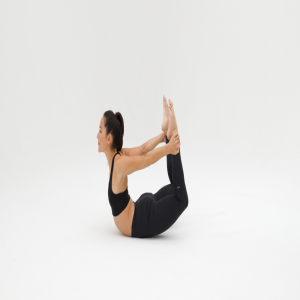
7) Bow Pose
- Begin the stretch by lying on the stomach with the knees together and banding at a 90-degree angle.
- Lift the chest and stomach off the mat while remaining the pelvis and thighs on the mat.
- Move the arms backward and grab the ankles as you pull the legs up and push the chest out.
- Keep the neck stable with the spine by looking at the wall in front of you during the whole stretch.
- Hold this abs stretch for 30 secs & then slow down the upper body and legs to the mat.
8) Bicycle crunch
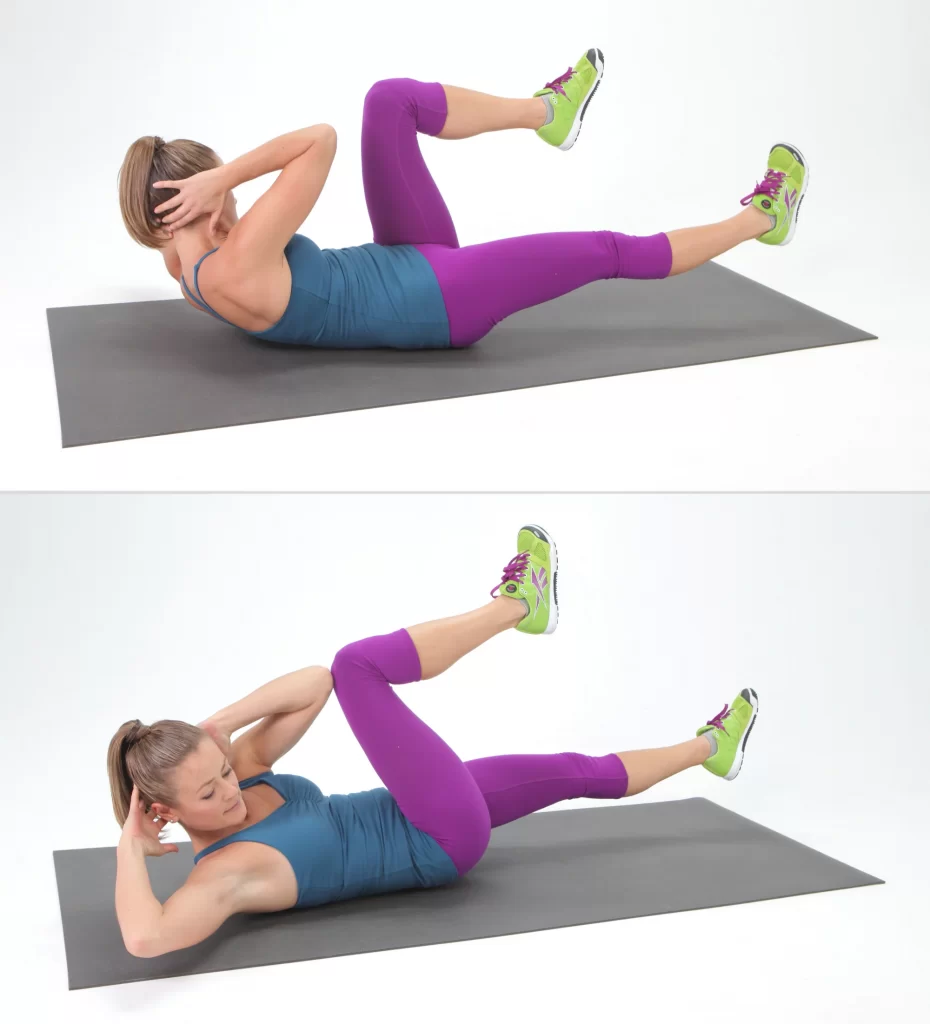
- Lie flat on the floor with your lower back pressed to the mat and knees flex.
- Your feet should get on the mat and your hands are behind your head. Contract your core muscles, drawing in your abdomen to fix your spine.
- With your hands gently assets your head, pull your shoulder blades back and slowly elevate your knees to about a 90-degree angle, lifting your feet from the floor.
- Exhale and slowly, at first, undergo a bicycle pedal motion, bringing one knee up towards your armpit while straightening the opposite leg, keeping both elevated above your hips. Rotate your torso so you’ll meet your elbow to the opposite knee as it comes up.
- Alternate to twist to the opposite side while drawing that knee towards your armpit and the other leg extended until your elbow touches the alternate knee.
- The goal is for 12 to twenty repetitions and 3 sets.
9) Reverse crunch

- Start lying down with your arms by your sides.
- Raise your legs so your thighs are perpendicular to the floor and your knees are bent at a 90° angle.
- Breathe out and contract your abs to bring your knees up towards your chest and raise your hips off the floor.
- Hold for a beat in this position, then slowly lower your legs back to the starting position.
Preventive measures for abdominal muscle strain
- Proper warm-up before some sporting activity or exercise
- Stretch after exercising or playing sports
- Avoid sudden intense strength training and build strength moderately
- Do regular stretching and strengthening exercises for your, fitness, sports activity, or work exertion, as an element of your overall physical activities
- An exercise program can help to attenuate your danger of muscle strains.
- Attempt to be in a shape to play your sport; do not play your sport to get in shape.
- If you’ve got a physically demanding occupation, regular exercise can help to assist in injuries.
- Follow a healthy diet and an exercise program to take care of a healthy weight. The overweight can put added pressure on the muscles, making muscle strains again probable to do
FAQ
What does an abdominal muscle strain feel like?
A strained abdominal muscle can make the abdomen feel sore and tender, especially during movement. If people have strained a muscle, they may notice the some symptoms in and around the abdomen:
pain or discomfort when touching the abdomen.
tenderness or soreness.
swelling
How long can a muscle strain last?
For a mild second-degree strain, you may be able to return to normal activities within three to six weeks with basic home care.
For more severe third-degree strains, recovery can take several months. In severe cases, surgical repair and physiotherapy may be compulsory. With correct treatment, most people recover completely.
What does an oblique strain feel like?
An oblique injury, also called side strain, can feel like sharp and shouting pain in the rib cage the first time the oblique muscle gets injured. Over time, you’ll experience a sense of pressure and tightness on the lower ribs or the front side of the abdomen
How do you heal an abdominal strain?
rest
Cold therapy. Performing cold therapy as soon as possible can help to relieve pain, bleeding, and swelling.
Heat therapy. Using heat therapy can help to reduce pain. loosen your muscle.
Over-the-counter (OTC) painkillers.
Exercise
Is it a muscle strain or hernia?
Pain or No Pain
A pulled abdominal can cause mild pain or sudden sharp pain, which can be aggravated by coughing, laughing, and sneezing in a consistent area. Hernias don’t usually cause pain initially. But as they grow, they will cause discomfort that many people describe as ‘achy or heavy.



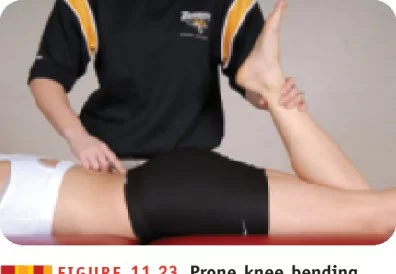

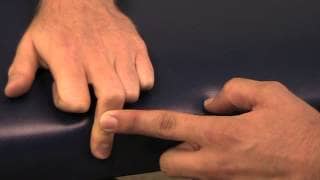
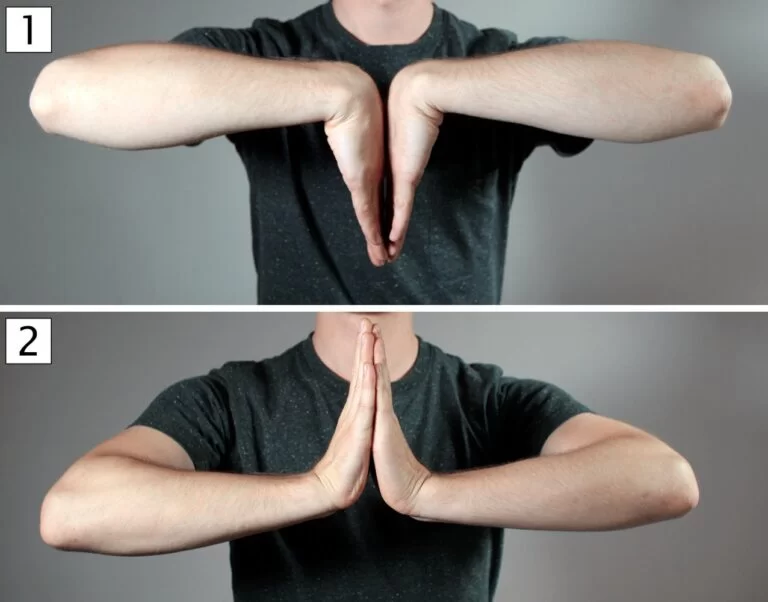
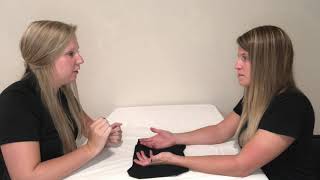
5 Comments